
Introduction
Manitoba's labour market conditions are unique, its economy is vibrant, and the province is strongly positioned to embrace the opportunities and tackle the challenges of the labour market of the future.
Manitoba’s Labour Market Outlook for 2022–2026 identifies expected trends for the province’s labour market based on an occupation forecasting model that projects the number of openings in individual jobs and industry sectors, as well as the number of workers available to fill those jobs. Projections for anticipated labour gaps are also provided at the occupation, industry and educational program level to help us plan for the future.
The purpose of this outlook is to increase understanding of the state of the Manitoba labour market and the key issues involved in achieving future labour market goals for both individuals and Manitoba businesses. The outlook is intended to facilitate career planning for Manitobans, workforce planning by government and industry, and to promote awareness and discussion about the state of the labour markets and implications for business and government initiatives.
Assumptions
Population growth is a main driver of supplying the workforce to fill future jobs. Manitoba is expected to continue slow and steady population growth over the next five years. The Manitoba Bureau of Statistics projects that Manitoba’s population will grow by 55,000 residents over the next five years (2022–2026), or 11,000 per year on average.
Immigration contributes greatly to Manitoba’s workforce growth. With international travel restrictions introduced to slow the spread of COVID-19, immigration numbers plummeted across Canada in 2020—Manitoba welcomed only 8,628 immigrants that year. This lower inflow of workers from overseas is expected to impact Manitoba’s workforce in the short-term, but immigration is expected to return to pre-pandemic levels over the forecasted period.
Natural increase is expected to contribute 35,442 new residents, and immigration will bring 80,789 new residents to the province, while net interprovincial migration will lead to the loss of 45,880 residents to other parts of Canada over the next five years.
Manitoba’s unemployment rate is expected to remain very low through the next five years.
More detailed information for employers, job seekers, career practitioners, and post-secondary institutions can be found on the other pages linked in the tool bar at the top of the page.
Labour Market Outlook for 2022–2026 at a Glance
For key highlights of the 2022–2026 Labour Market Outlook, download our complete "Outlook at a Glance" infographic (available in alternate formats upon request).
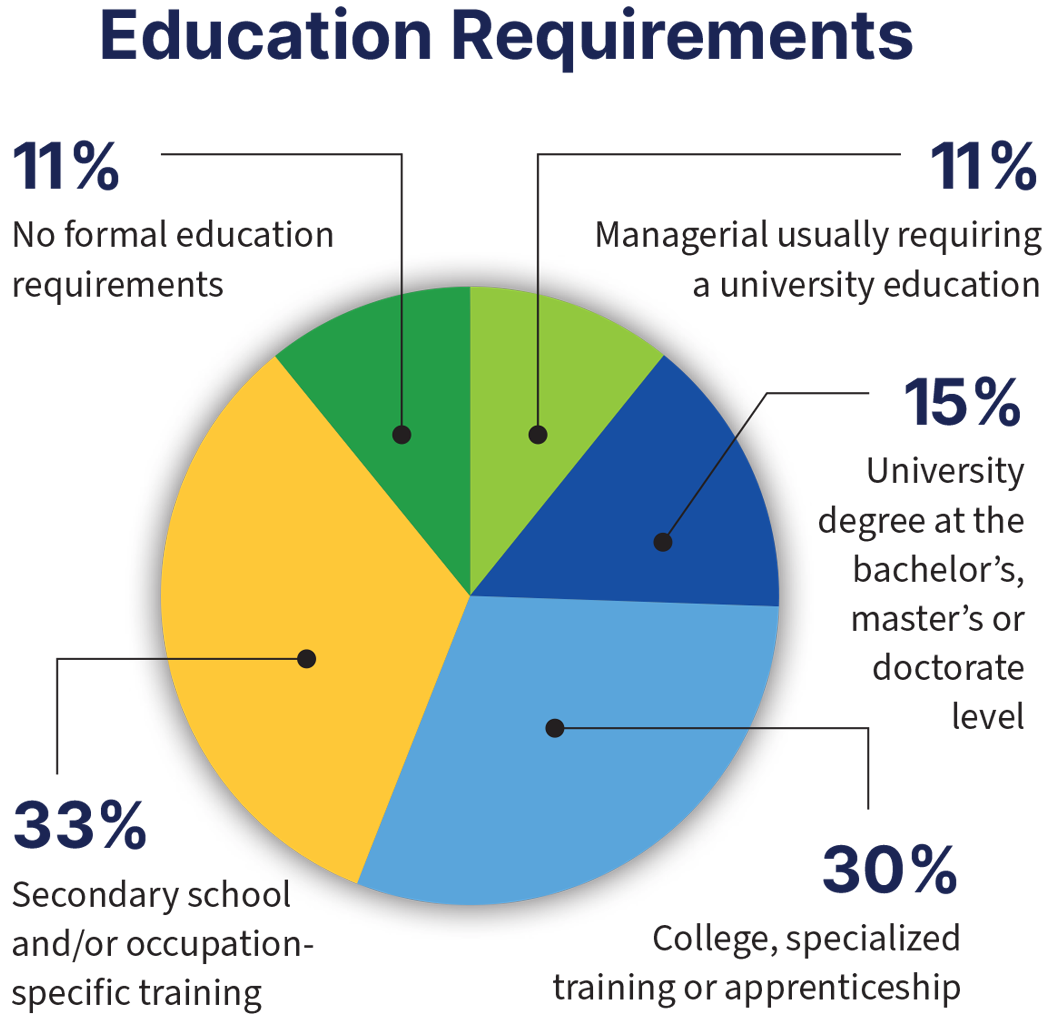

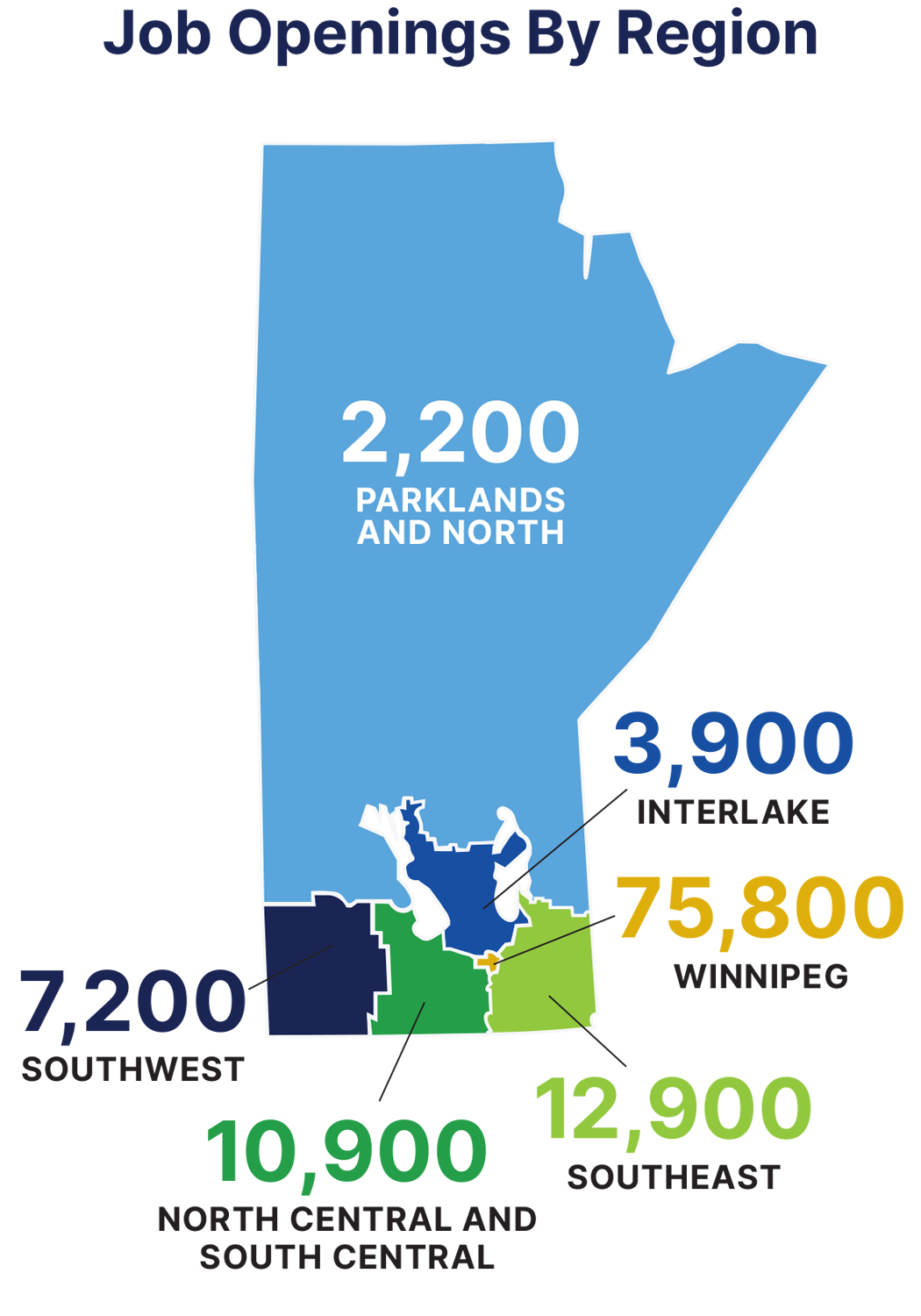
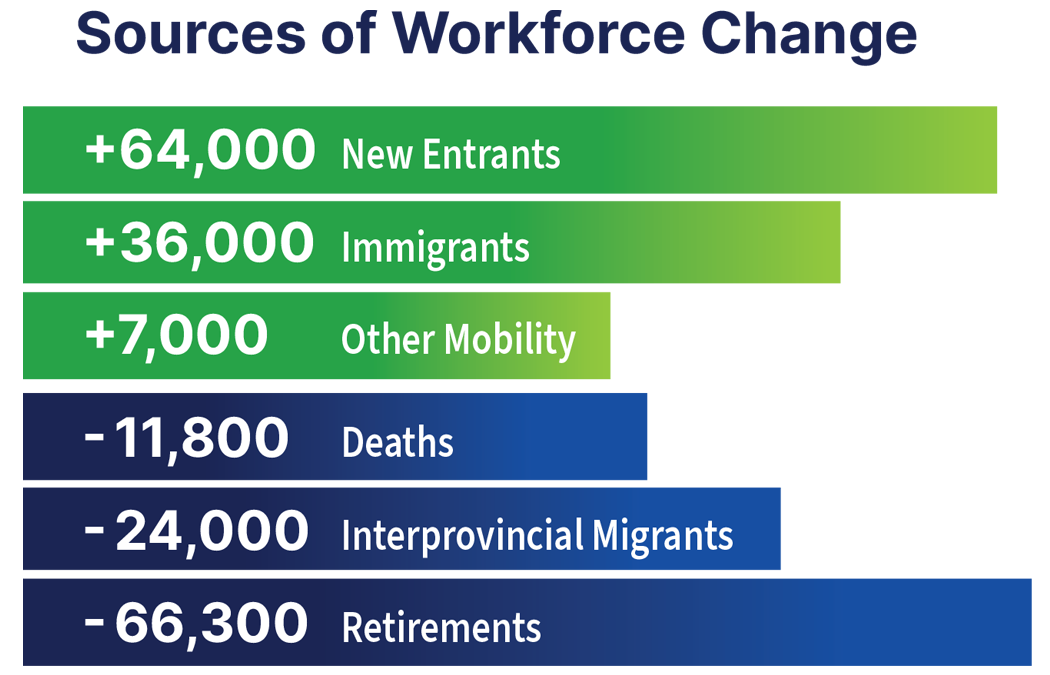
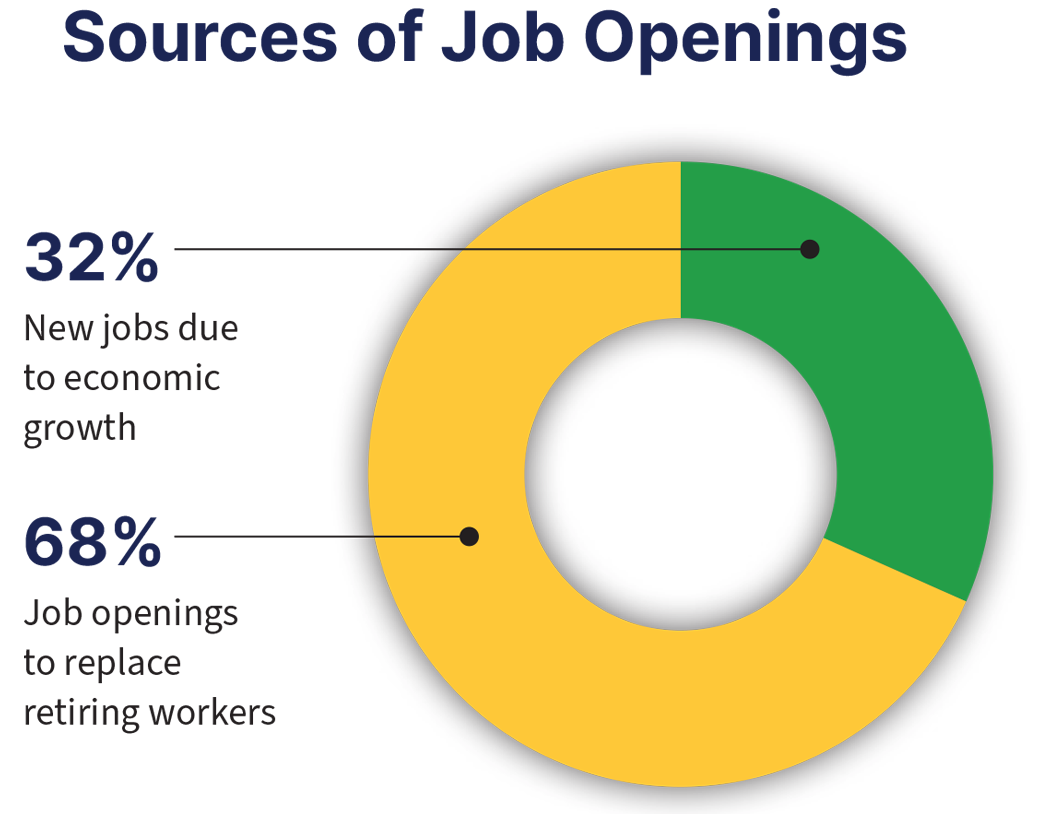

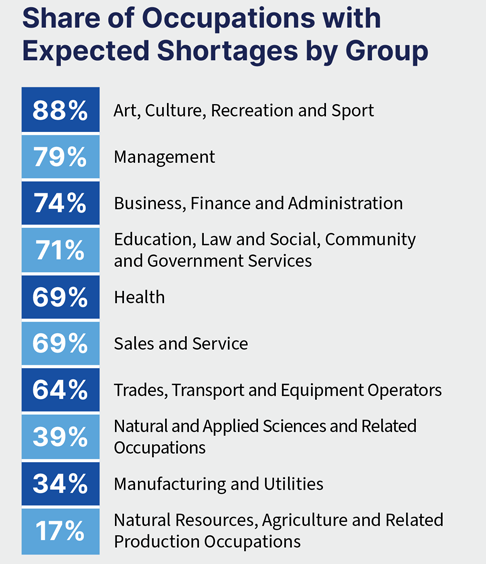

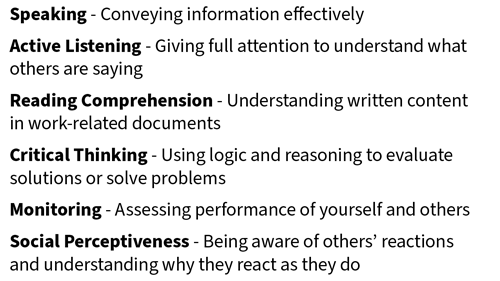


Labour gap is calculated by comparing the expected number of job openings in an occupation with the expected number of workers available in that same occupation. A positive gap indicates a labour shortage, while a negative gap means there will be a surplus of workers in the occupation.
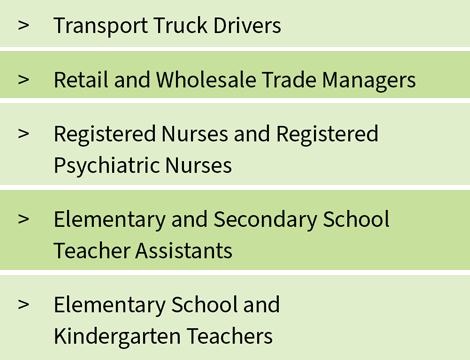
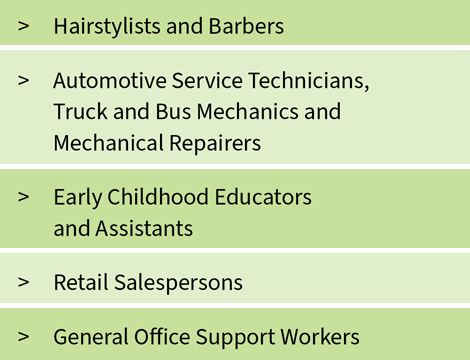

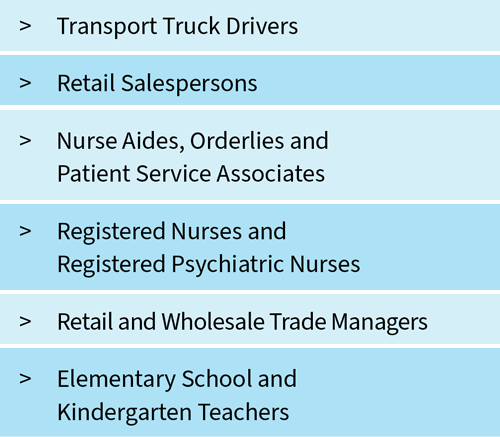
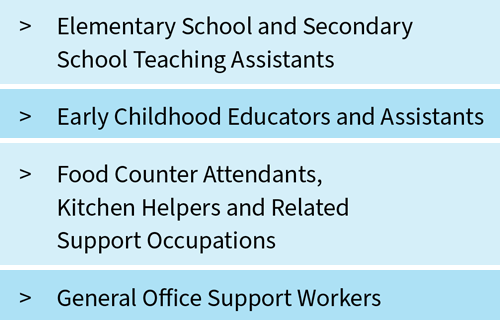
More detailed information for employers, job seekers and career practitioners, and post-secondary institutions can be found on the other pages linked in the tool bar at the top of the page.
Based on the nature of the public health restrictions implemented over the course of the pandemic, some industry sectors, particularly retail and accommodation services, were impacted to a greater degree than others.
Adjustments to the report may be required if there are any drastic changes in the manner that the virus affects Manitoba’s economy in the future.
Contact Information
Data and Evaluation Unit
Manitoba Economic Development, Investment, Trade and Natural Resources
Winnipeg, Manitoba
E-mail: lmi@gov.mb.ca


